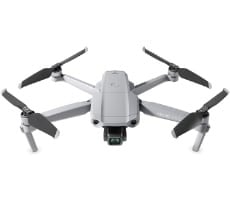Build A Killer Amiga Emulator For Under $100 With The Raspberry Pi 3
When you’re up and running, hitting the F12 key on your keyboard will bring the UAE4ARM menu back up at any time, where you can eject and insert other floppies, reboot, make configuration changes, etc.
At this point you’re technically done. There are lots of configuration options available in UAE4ARM if you'd like to experiment – too many to cover here. But play around to your heart’s content. You can always revert to a saved setup or start clean at any time. Something we will mention is that you’re likely to encounter some compatibility issues running older titles designed for the Amiga 500, on an emulated 1200. And newer games designed for the Amiga 1200’s more advanced AGA chipset, won’t run on the Amiga 500’s ECS chipset, so you may have to bounce between the two from time to time, or create a custom configuration in UAE4ARM that works best for your preferred application.
Overclocking And Hardware Mods
Because we’re a little crazy around here, we also took a few extra steps to wring some additional performance from the Raspberry Pi 3. The Pi 3’s settings are derived from config.txt file that is accessible on the root of the Micro-SD card. By adding a few parameters to that file, you can push the Pi 3 beyond its stock speeds.Our Pi 3 kit included some heatsinks for the Broadcomm SoC and the VREG on the PCB. But we had another one laying around the lab that we slapped on the memory as well (all of them were attached with the included thermal tape). That memory heatsink wouldn’t fit inside the Retro Amiga case, however, so we whipped out a Dremel and cut a hole in the bottom to accommodate it. We also added a couple of padded feet to raise the case up slightly and provide better airflow underneath. Anytime you overclock a device, additional heat is generated, so beefing up the cooling is a good idea.
By default, the Pi3 runs with a peak CPU clock of 1200MHz with a 300MHz GPU and 450MHz memory. Overclocking the GPU will have no effect on the Amiga, so we focused on the CPU and RAM and ultimately settled on a stable 1400MHz CPU speed with 550MHz memory. We also chose higher voltage options and tweaked some memory timings. There are a myriad of options available if you like to tinker, though. We suggest checking out this page for an in-depth explanation of all of the options and settings available when overclocking the Raspberry Pi.
To actually configure the overclock, all you’ve got to do is open the config.txt file available on the root of the Micro-SD card in a text editor and enter the settings at the bottom. The lines we added to the config.txt file were:
arm_freq=1400
over_voltage=5
sdram_freq=550
sdram_schmoo=0x02000020
over_voltage_sdram_p=6
over_voltage_sdram_i=4
over_voltage_sdram_c=4
Save the config.txt file after making the changes and simply boot as normal. If you overclocked too high and your Pi 3 isn’t stable, you can just remove the Micro-SD card and edit the config.txt file again. If you've got a keyboard attached to your Pi, holding the Shift key at boot will launch it with stock settings should you want to edit the config.txt file directly.







